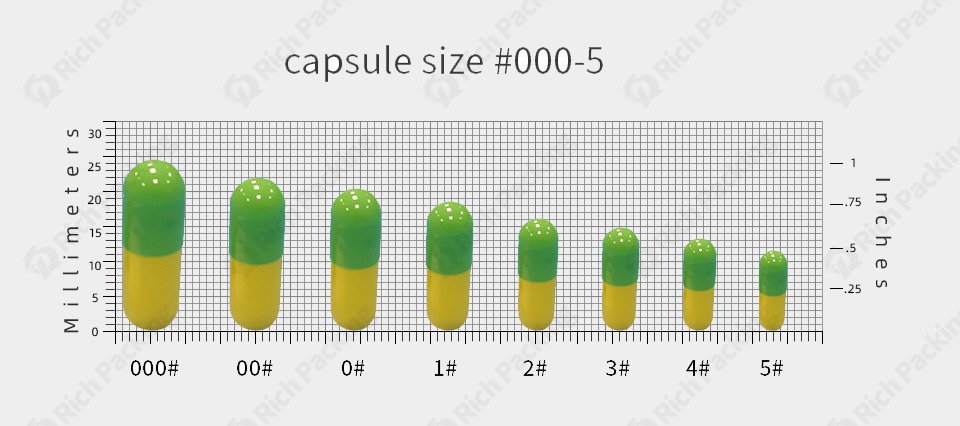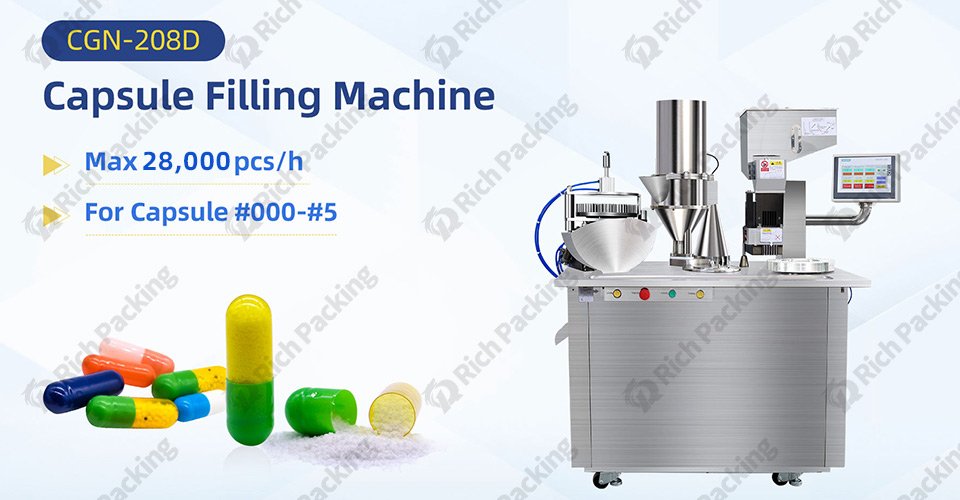هل تساءلت يومًا كيف تُملأ تلك الكبسولات الصغيرة التي تحتوي على مكملاتك الغذائية أو أدويتك اليومية بهذه الدقة؟ عالم تعبئة الكبسولات مزيجٌ رائع من العلم والتكنولوجيا والإبداع. من الطرق اليدوية المستخدمة في العمليات الصغيرة إلى الأنظمة الآلية عالية التقنية في شركات الأدوية العملاقة، تُعد عملية تعبئة الكبسولات أكثر تعقيدًا وتنوعًا مما تتخيل. انضم إلينا لنستكشف طرق تعبئة الكبسولات المتنوعة، ونكتشف الطريقة الأنسب لاحتياجاتك.
قبل الخوض في طرق التعبئة المختلفة، من الضروري فهم أساسيات الكبسولات نفسها. تُصنع الكبسولات عادةً من الجيلاتين أو السليلوز، وتأتي في جزأين: الجسم (الجزء الأطول) والغطاء (الجزء الأقصر). تتوفر بأحجام مختلفة، عادةً ما تكون مرقمة من 000 (الأكبر) إلى 5 (الأصغر)، ويُعتبر الحجمان 0 و00 الأكثر شيوعًا في المكملات الغذائية.
يُعدّ حجم الكبسولات عاملاً حاسماً في تحديد طريقة التعبئة والآلات المناسبة. إليك لمحة سريعة عن أحجام الكبسولات الشائعة واستخداماتها الشائعة:
- المقاس 000: أكبر حجم، يُستخدم للمساحيق الضخمة أو الحبوب المتعددة
- الحجم 00: شائع للمكملات الغذائية والأدوية ذات الجرعات الأكبر
- الحجم 0: يستخدم على نطاق واسع للمكملات الغذائية والأدوية
- الحجم 1 و2: يستخدمان غالبًا للمضادات الحيوية والمكملات الغذائية ذات الجرعات الصغيرة
- الحجم 3 و4: يستخدم عادةً للزيوت والأدوية ذات الجرعات المنخفضة
- المقاس 5: أصغر مقاس قياسي، يُستخدم للأدوية ذات الجرعات المنخفضة جدًا أو أدوية الأطفال
الآن بعد أن أصبحت على دراية بأساسيات الكبسولة، دعنا نستكشف طرق التعبئة المختلفة المتاحة.

يُعدّ ملء الكبسولات يدويًا الطريقة الأكثر بساطة، ويُستخدم غالبًا في الإنتاج على نطاق صغير أو لإعداد تركيبات مخصصة. إليك كيفية عمله:
1. قم بفصل الكبسولات إلى قسم الجسم وقسم الغطاء.
2. ضع أجسام الكبسولات في صينية تخزين بها فتحات بحجم مناسب للكبسولات.
3. املأ جسم كل كبسولة بالمسحوق أو المحتوى باستخدام مغرفة صغيرة أو ملعقة.
4. اضغط على المسحوق للتأكد من ملء متناسق.
5. ضع الأغطية مرة أخرى على الأجسام المملوءة واضغط عليها لإغلاقها.
على الرغم من أنها تستغرق وقتًا طويلاً، إلا أن هذه الطريقة تتيح تحكمًا دقيقًا في عملية التعبئة، وهي مثالية للدفعات الصغيرة أو عند التعامل مع مكونات باهظة الثمن. تُستخدم هذه الطريقة عادةً من قِبل صيدليات التركيبات الطبية، وأخصائيي الأعشاب، ومصنعي المكملات الغذائية الصغار.
- استثمار أولي منخفض
- مناسبة للدفعات الصغيرة
- يسمح بتركيبات مخصصة
- تستغرق وقتا طويلا
- كثيفة العمالة
- احتمال حدوث خطأ بشري
آلة تعبئة كبسولات نصف آلية، تعمل على فصل الكبسولات، وتعبئة المسحوق، وإغلاق الكبسولات، لتحقيق إتمام آلي ميكانيكي، مع تشغيل يدوي فقط في كل خطوة، مما يُحسّن الإنتاج بشكل كبير ويوفر تكاليف العمالة. إليك آلية عملها النموذجية:
1. قم بتحميل الكبسولات الفارغة في درج الجهاز.
2. تقوم الآلة بفصل أجسام الكبسولات والأغطية.
3. املأ قمع المسحوق بالمنتج الذي تريده.
4. تقوم الماكينة بتوزيع المسحوق على كل كبسولة بكمية محددة.
5. اختياريًا، يمكنك إضافة خطوة دك لضغط المسحوق.
6. تقوم الآلة بإعادة ربط الأغطية بالأجسام المملوءة.
7. يتم إخراج الكبسولات النهائية من الجهاز.
تتوفر الآلات شبه الأوتوماتيكية بأحجام مختلفة، قادرة على تعبئة ما بين 100 و5000 كبسولة في الدورة. وهي خيار ممتاز للإنتاج متوسط الحجم أو للشركات التي تسعى إلى التوسع بدلاً من التعبئة اليدوية.
نحن هنا نستخدم آلة تعبئة الكبسولات شبه الأوتوماتيكية CGN-208 على سبيل المثال، التعبئة والتغليف الغني. تصل إنتاجية هذه المعدات إلى 28,000 قطعة/ساعة، أي أكثر من 90 ضعفًا من إنتاج التعبئة اليدوية التي تتراوح بين 100 و300 قطعة/ساعة. هذا يوفر الكثير من تكاليف العمالة والوقت، ويعزز كفاءة الإنتاج بشكل كبير.

الايجابيات:
- زيادة سرعة الإنتاج مقارنة بالملء اليدوي
- أوزان تعبئة أكثر اتساقًا
- مناسبة للإنتاج المتوسط الحجم
- استثمار أولي أعلى من الطرق اليدوية
- قد يتطلب بعض التدريب للعمل بشكل فعال
- أقل مرونة من التعبئة اليدوية للتركيبات المخصصة
تصل قدرة إنتاج آلة الكبسولات الأوتوماتيكية إلى 468000 قطعة / ساعة، وهي مناسبة للإنتاج الضخم، مع وحدة تغذية المسحوق الفراغية ووحدة تغذية الكبسولات المجوفة يمكنها تحقيق إنتاج بدون تدخل يدوي. فيما يلي نظرة عامة مبسطة على العملية:
1. يتم تحميل الكبسولات الفارغة في القادوس.
2. تقوم الماكينة بتوجيه الكبسولات وفصلها.
3. يتم وضع أجسام الكبسولة في منطقة التعبئة.
4. يتم توزيع المسحوق أو المحتوى بدقة في جسم كل كبسولة.
5. يتم دك الكبسولات بشكل اختياري لضمان كثافة ثابتة.
6. قم بمزامنة غطاء الكبسولة مع جسم الصمام المملوء.
7. أكمل مجموعة القفل المكونة من غطاء الكبسولة والقشرة لتخرج وتجميع تلقائيًا.
8. مراقبة الجودة، وملاحقة جودة الوزن والمظهر والكشف عن المعادن.
تستطيع الآلات المؤتمتة بالكامل التعامل مع مجموعة واسعة من أحجام الكبسولات ومواد التعبئة، بما في ذلك المساحيق والجسيمات والسوائل، وحتى توليفات منها. يمكن إضافة آلية التعبئة وترقية برنامج التحكم المنطقي القابل للبرمجة (PLC) من خلال طاولة إعادة التعبئة الدوارة لتحقيق تأثير توليفات مواد متعددة، وهو ما يناسب استخدام تركيبات خاصة. كما تتضمن آلات تعبئة الكبسولات المؤتمتة بالكامل، المتطورة عالميًا، ميزات متقدمة مثل فحص الوزن، وكشف المعادن، والإزالة التلقائية للكبسولات المعيبة، والاتصال الفوري لبيانات الإنتاج بمحطات الخدمة.
مثل التعبئة الغنية NJP-3800D آلة تعبئة الكبسولات الأوتوماتيكية يمكنها تعبئة أنواع مختلفة من الكبسولات، مثل #000-#5، وتعبئة المساحيق والجسيمات والسوائل والمواد المركبة، مع خاصية إزالة النفايات تلقائيًا. تصل الطاقة الإنتاجية إلى 228,000 كبسولة/ساعة. إنها الخيار الأمثل لإنتاج كبسولات الأدوية بكميات كبيرة في شركات الأدوية والمنتجات الصحية.

الايجابيات:
- سرعة إنتاج عالية (تصل إلى 228000 كبسولة في الساعة)
- أوزان التعبئة والجودة متسقة
- انخفاض تكاليف العمالة
- مناسبة للإنتاج على نطاق واسع
- استثمار أولي مرتفع
- يتطلب مشغلين مهرة وموظفي صيانة
- أقل مرونة للدفعات الصغيرة أو التغييرات المتكررة في التركيبة
في حين أن ملء المسحوق هو الطريقة الأكثر شيوعًا، حشوة سائلة يُستخدم على نطاق واسع، خاصةً في صناعة الأدوية. هناك عدة طرق لملء الكبسولات السائلة:
1. الختم الحراري: يتم ملء السائل داخل جسم الكبسولة، ويتم غلق الغطاء باستخدام الحرارة.
2. الربط: بعد التعبئة، يتم وضع شريط جيلاتيني حول مفصل الكبسولة لمنع التسرب.
3. تغليف السائل: يتم تشكيل الكبسولة بأكملها حول محتوى السائل في خطوة واحدة.
يمكن أن تكون آلات تعبئة السوائل شبه آلية أو آلية بالكامل، حسب حجم الإنتاج. وتتطلب تحكمًا دقيقًا في درجة الحرارة وضبطًا دقيقًا للجرعات لضمان ثبات أحجام التعبئة ومنع التسرب.

طرق تعبئة الحبيبات
تعبئة الحبيبات هي طريقة متخصصة أخرى، تُستخدم غالبًا في تركيبات الإطلاق المُتحكّم. يمكن تعبئة الحبيبات بطريقتين رئيسيتين:
1. التعبئة الوزنية: يتم توزيع الحبيبات حسب الوزن في كل كبسولة.
2. التعبئة الحجمية: يتم توزيع حجم محدد من الحبيبات في كل كبسولة.
غالبًا ما تتضمن آلات تعبئة الحبيبات ميزات لمنع كسر الحبيبات وضمان التوزيع المتساوي داخل الكبسولة.
يعتمد اختيار طريقة ملء الكبسولة المناسبة على عدة عوامل:
1. حجم الإنتاج: يدوي للدفعات الصغيرة، وشبه آلي للإنتاج المتوسط الحجم، وآلي بالكامل للإنتاج واسع النطاق.
2. خصائص المنتج: تتطلب تركيبات المسحوق أو السائل أو الحبيبات طرق تعبئة مختلفة.
3. حجم الكبسولة ونوعها: تأكد من أن الطريقة التي اخترتها قادرة على تلبية متطلبات الكبسولة المحددة لديك.
4. الميزانية: ضع في الاعتبار كل من الاستثمار الأولي وتكاليف التشغيل طويلة الأجل.
5. المرونة: إذا كنت تقوم بتغيير التركيبات بشكل متكرر، فقد يكون من الأفضل استخدام طريقة أكثر مرونة.
6. متطلبات مراقبة الجودة: غالبًا ما تقدم الأنظمة الآلية نتائج أكثر اتساقًا وفحوصات جودة مدمجة.
7. الامتثال التنظيمي: تأكد من أن الطريقة المختارة تلبي المعايير واللوائح الصناعية ذات الصلة.
مع تقدم التكنولوجيا، تساهم الابتكارات الجديدة في تشكيل مستقبل تعبئة الكبسولات:
1. كبسولات مطبوعة ثلاثية الأبعاد: كبسولات مصممة خصيصًا لتركيبات أو علامات تجارية فريدة.
2. الكبسولات الذكية: تتضمن أجهزة استشعار لتوصيل الدواء أو مراقبته بشكل مستهدف.
3. الأنظمة الروبوتية: زيادة الأتمتة والمرونة في عمليات تعبئة الكبسولات.
4. الذكاء الاصطناعي والتعلم الآلي: تحسين أوزان التعبئة واكتشاف المشكلات المحتملة في الوقت الفعلي.
5. التصنيع المستمر: الابتعاد عن الإنتاج على دفعات من أجل زيادة الكفاءة.
كما لاحظتم، يُعدّ ملء الكبسولات مجالًا متنوعًا ومتطورًا، إذ يُقدّم حلولًا شاملة، بدءًا من التركيبات المُخصّصة على نطاق صغير ووصولًا إلى عمليات الإنتاج الدوائي الضخمة. بفهمكم للطرق المُختلفة المُتاحة، ستتمكّنون من اختيار النهج المُناسب لاحتياجاتكم بشكل أفضل. سواءً كنتم مُنتجين صغيرين للمُكمّلات الغذائية أو شركات أدوية كبيرة، فإنّ عالم ملء الكبسولات في ازدياد مُستمرّ، واعدًا بحلول أكثر كفاءةً ودقةً في المُستقبل.